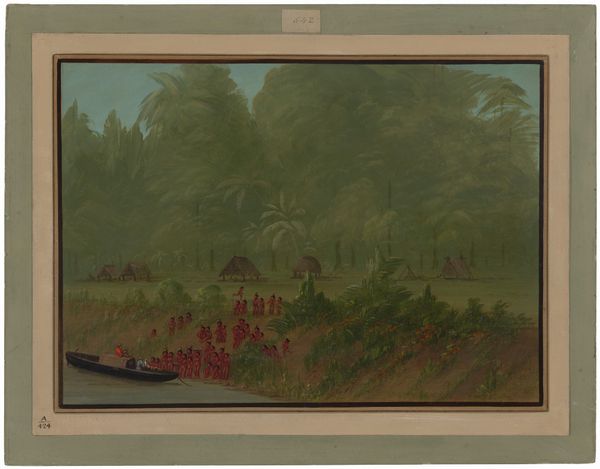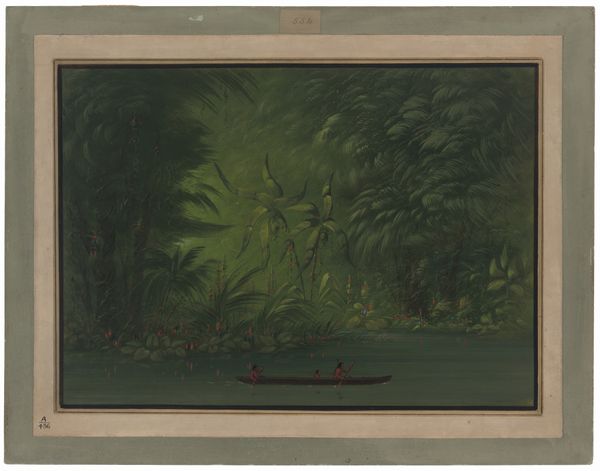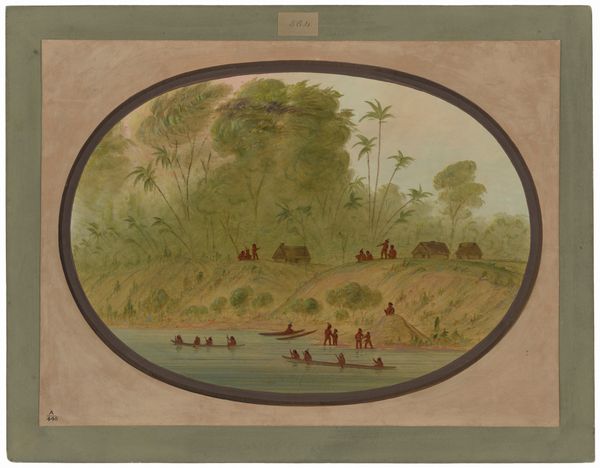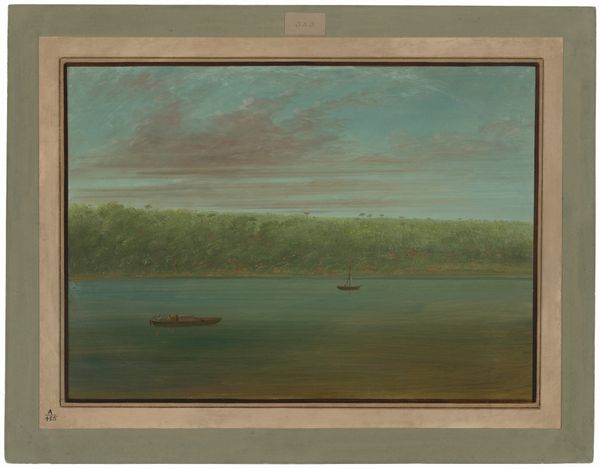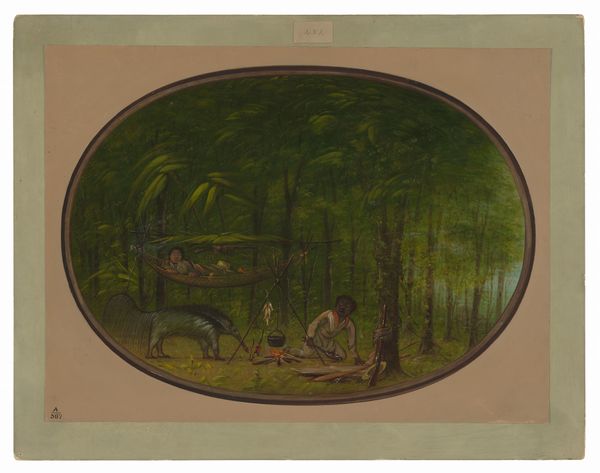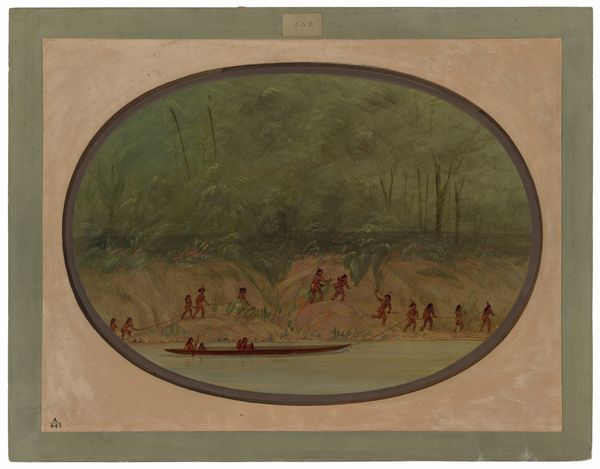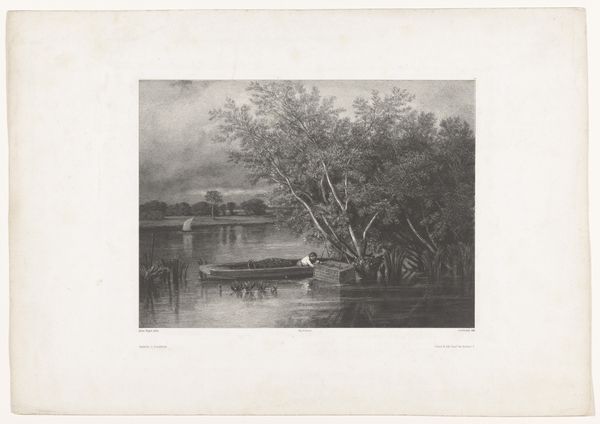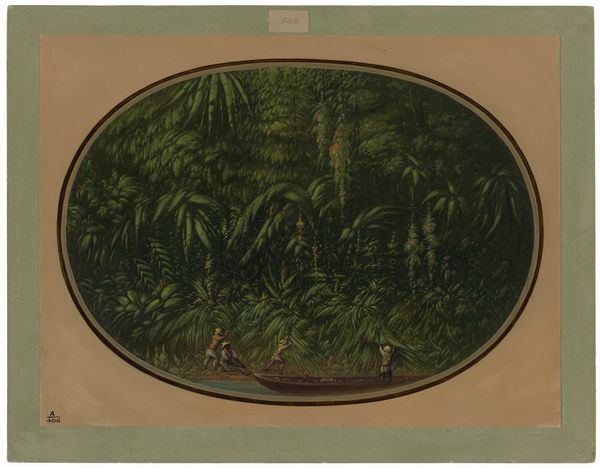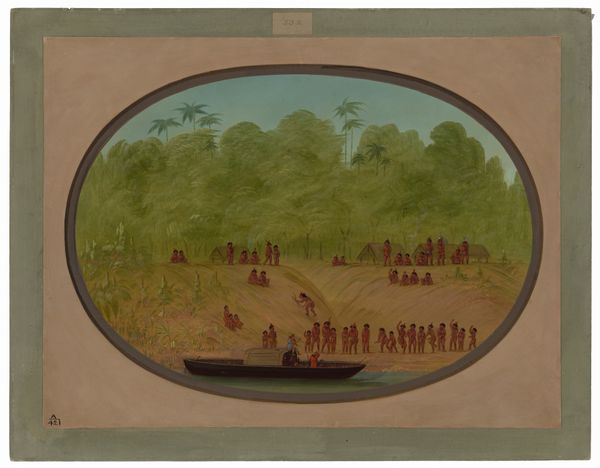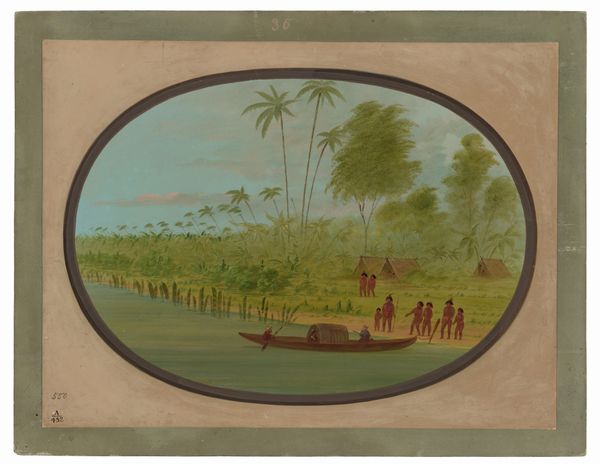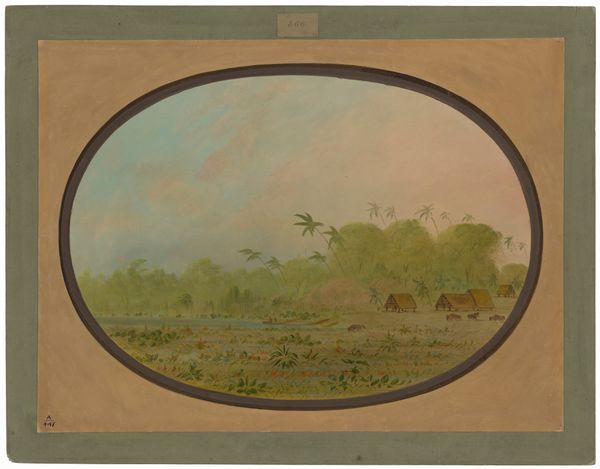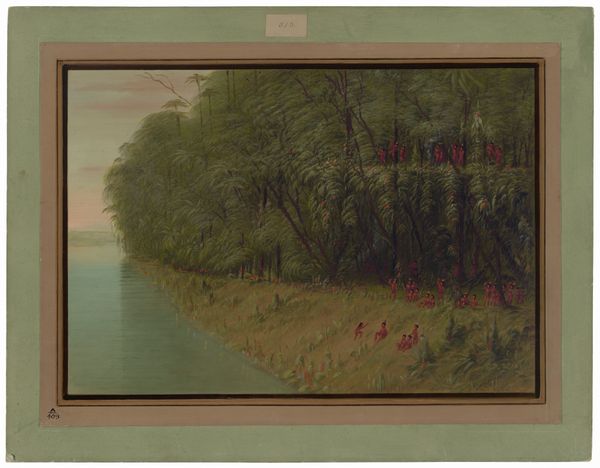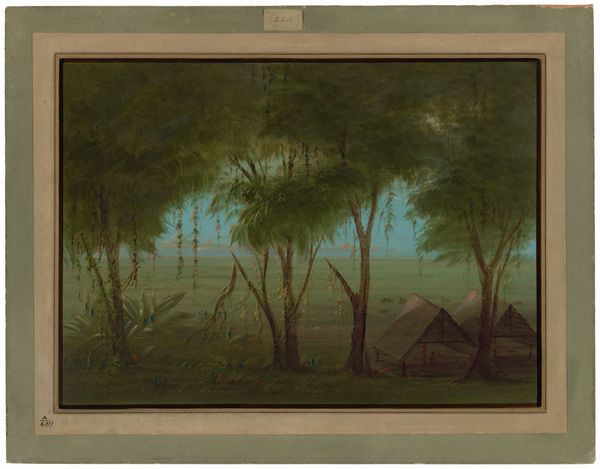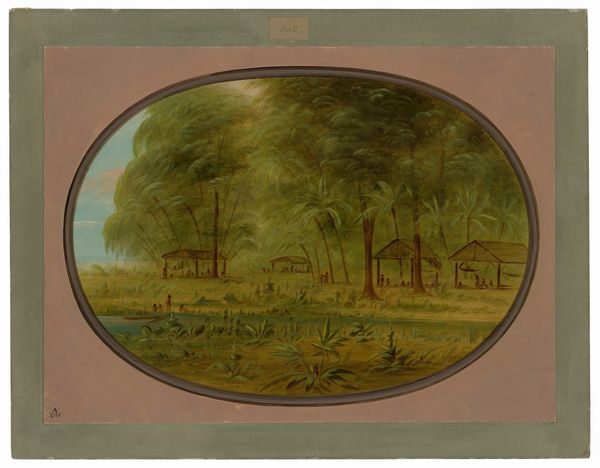
gouache
#
gouache
#
landscape
#
watercolor
Dimensions: overall: 47.4 x 63.3 cm (18 11/16 x 24 15/16 in.)
Copyright: National Gallery of Art: CC0 1.0
Curator: This watercolor, titled "Shore of the Uruguay - Making a Sketch," was created by George Catlin, likely sometime between 1854 and 1869. Editor: There's a captivating calmness to it. The soft colors and the gentle sway of the river create a tranquil atmosphere. What immediately strikes me is how the central image is presented within an oval frame on the page itself, lending a somewhat voyeuristic feel to the scene. Curator: It's interesting you say that. Catlin positioned himself, quite literally, as an observer of Indigenous life, often romanticizing his encounters. This particular artwork allows us to investigate the dynamic between the artist, the people he depicted, and the environment they inhabited. How might the lens through which Catlin observed shape our understanding of Indigeneity? Editor: Precisely! It's important to consider the power dynamics at play. The act of "making a sketch" is not neutral; it involves selection, interpretation, and a certain degree of appropriation. Catlin's presence, his perspective, invariably influenced the narrative. We need to acknowledge how that colors our view. What exactly do you make of the scene depicted, though? The lush greens behind the boat create a palpable sense of depth. Curator: I agree. We see figures disembarking from a canoe on the riverbank with that dense foliage as backdrop, hinting at the rich biodiversity of the region. Catlin's composition prompts us to think about his intentions. Was he merely documenting the landscape, or was he crafting a particular narrative about the relationship between Indigenous peoples and their land? This feeds directly into larger colonial tropes. Editor: Right. The painting prompts critical inquiry into representation. Considering that Indigenous voices have often been marginalized in historical accounts, how can we analyze works like this to acknowledge their presence and perspectives? Are we even justified in admiring an image that is rooted in such problematic origins? Curator: Absolutely. We have to confront the complex legacies of artworks such as these. Approaching this work with critical awareness enables us to foster a deeper engagement with the complexities of the past and its reverberations in the present. Editor: For me, this brief exploration proves the necessity of decolonizing art history. Curator: And underscores art's power to challenge perceptions.
Comments
No comments
Be the first to comment and join the conversation on the ultimate creative platform.
